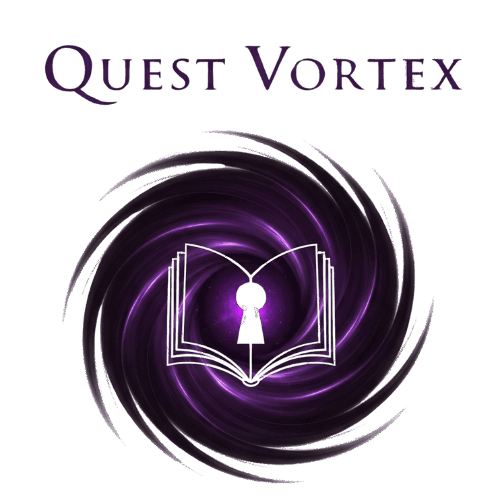I’ve played Rangers for too long. Like… way too long. I’ve been elbows-deep in ranger subclasses 5e since the early days of D&D 5e, tinkering with Hunter, Beast Master, and every weird offshoot the devs threw at us. In my experience, people ask the same thing: “Which one is the best?” And then they want a fast build for a Gloom Stalker or a cute pet for Beast Master or some Fey Wanderer charm trick that turns the party’s face into a backup dancer. I get it. I want that, too. So let’s talk builds, vibes, and real table play. I’ll keep this simple. No fluff. You’ll get my real opinions, little jokes, and a few “I learned this the hard way” moments. And yes, I’ll cover LSI stuff like Gloom Stalker, Horizon Walker, Swarmkeeper, Monster Slayer, Drakewarden, Hunter’s Mark, Favored Foe, and Tasha’s optional features. Buckle up.
How I judge a Ranger subclass (and why you should care)

I don’t care how a subclass sounds on paper. I care about the table. What it does right now. What I’ve always found is that three things matter most:
- Does it do something cool at level 3? Not in ten sessions. Now.
- Is it easy to run on a busy night? I love math, but I hate homework during combat.
- Does the party notice you? Spotlight isn’t everything, but it’s not nothing.
Also, a quick PSA from your slightly-cynical uncle: Tasha’s Cauldron of Everything made Rangers better. The optional features, like Deft Explorer and Favored Foe, fix a bunch of the old pain. If your DM allows them, use them. If not, well… get snacks. You’ll need them.
If you’re new-new to the class concept, the general Ranger deal is on the Ranger (Dungeons & Dragons) page. And if you’re still figuring out how 5th edition even works, skim Dungeons & Dragons 5th edition stuff too. I won’t tell anyone.
Quick cheat sheet: subclasses at a glance
I like tables. They save brain cells. Here’s the fast read on the big archetypes.
| Subclass | Core Trick | Vibe | Best For | Pops At | Watch Out For |
|---|---|---|---|---|---|
| Hunter | Pick-and-play damage and defense options | Classic monster slayer | Beginners, archers | Level 3, 5, 11 | Easy to overlook your choices |
| Beast Master (with Tasha’s) | Strong pet that uses your bonus action | Bond-with-your-animal | Pet fans, melee or ranged | Level 3 and 5 | Bonus action economy gets tight |
| Gloom Stalker | Ambush burst, darkvision tricks | Batman but in a cave | Stealth lovers, dungeon delvers | Level 3 | Sunlight. Also party pacing |
| Horizon Walker | Teleport, force damage spike | Planar scout | Mobile skirmishers | Level 3 and 7 | Bonus action competition |
| Monster Slayer | Mark-and-burn single target | Witcher-lite | Boss fights, anti-mage | Level 3, 7 | Less flashy in big crowds |
| Fey Wanderer | Charm resilience, psychic add-on, face skills | Pretty but scary | Party face, trickster | Level 3+ | Needs you to talk to stuff |
| Swarmkeeper | Force-move with bug/spirits swarm | Weird druid-cousin | Battlefield control | Level 3, 11 | DM rulings on forced movement |
| Drakewarden | Dragon buddy with scaling damage | Friendship with a lizard tank | New players, pet enjoyers | Level 3, 7 | Space at the table, mounted rules |
The subclasses, with my honest takes
Hunter: the clean, crunchy classic
Hunter is the “I just want to shoot and win” subclass. Pick Colossus Slayer at 3 if you want simple extra damage when a target is already hurt. I usually grab Horde Breaker if I know we’ll fight crowds. Both are fine. At 7, Multiattack Defense is boring on paper, but very real in play; it keeps you standing. At 11, Volley is wild on archer builds. Hello, action economy. It’s beginner-friendly and works with the Archery fighting style, Sharpshooter, and a longbow. Easy mode, but not lame.
Spells that sing: Hunter’s Mark (duh), Spike Growth (makes DMs sigh), and Pass without Trace for stealth missions. I’ve always found that a Hunter keeps a team stable. No drama. Does the job.
Beast Master (with Tasha’s fixes): the redemption arc
I survived the old Beast Master era. It was pain. Your pet ate your action, and then your soul. But with the Tasha’s “Primal Companion” setup, the animal actually hits, scales, and listens. It uses your bonus action to act, and its stat block grows with you. This turns the subclass into “pet plus you” instead of “pet or you.” Which is how it should be.
Good setups: archery Ranger with a Primal Beast that gets in and grapples things you don’t want touching you. Or a two-weapon Ranger with a pet flanking buddy. You can also run a cute “control” angle: your pet shoves, you drop Spike Growth, enemies cry. I like when tears are part of the plan.
Gloom Stalker: surprise, it’s three attacks and your nightmare
Gloom Stalker pops at level 3 like a confetti cannon. Dread Ambusher gives you a bonus to initiative, extra movement, and an extra attack with extra damage on the first turn. Umbral Sight means your darkvision gets longer, and enemies with darkvision can’t see you in darkness. Which is rude and fun. I’ve seen a Gloom Stalker end fights before the Cleric finishes their tea. That said—if your DM runs lots of sunny fields, your shadow tricks won’t shine as much. Bring your own darkness sometimes (Fog Cloud, Darkness via a friend, or just be sneaky).
Gloom archers love: Archery style, Sharpshooter, Piercer, and the “shoot first ask later” plan. Melee Glooms are scary too with two-weapon fighting or a polearm, but that splits your bonus actions with things like Hunter’s Mark. Keep your plan tight.
Horizon Walker: teleport and force damage pranks
This subclass lets you hit harder with Planar Warrior (force damage is chef’s kiss) and later teleport around the fight like you own the place. It’s a skirmisher’s dream. The bonus action tax is real, since Planar Warrior also eats your bonus action, but when it lands, it slaps.
I ran a Horizon Walker in a Spelljammer game, and blinking around ships never got old. If you’re into space elves and cosmic drama, check this Astral Elf Spelljammer guide. Pair that with a Horizon Walker and watch the vibe come to life.
Monster Slayer: steady pressure, boss bully
Monster Slayer is the quiet worker. You tag a target (Slayer’s Prey), learn a creature’s resistances, and lock them down. It’s very “I studied the blade,” but with spreadsheets. Works great on spellcasters, vampires, dragons—anything with nonsense to sniff out. It won’t farm a goblin crowd as fast as a Hunter with Volley, but in boss fights it’s money.
Fey Wanderer: charming menace with a smile
Fey Wanderer makes you weirdly good at talking. Otherworldly Glamour lets you add Wisdom to your Charisma checks—for those “please don’t arrest me” moments. You also sprinkle psychic damage and get spells like Misty Step and Summon Fey. I’ve played a Fey Wanderer who looked like a friendly gardener and then just melted minds mid-conversation. It ruled. It’s also fun for roleplay. If your table likes social scenes, this subclass feels amazing.
Swarmkeeper: push, pull, yeet
Swarmkeeper is my pick when I want to control the board. Gathered Swarm adds forced movement or extra damage on hits. The trick: forced movement can shove enemies into Spike Growth, off ledges, or out of the enemy’s “I’m safe” box. It also doesn’t always trigger opportunity attacks, so learn the rules and enjoy the chaos. I use Thorn Whip and melee pokes to set up shoves. It’s like curling, but with bees.
Drakewarden: raise your tiny dragon right
You get a drake. It scales, gets stronger, spits damage, and later you can ride it. It feels heroic. It’s also stable. A great newbie pick because your feature always matters. You can go bow or blade and your dragon pal will keep pace. My tip: talk to your DM and the party about space. Mounted life has geometry. I once tried to ride a drake through a narrow cave. Did it work? No. Was it funny? Also no. It was loud and awkward.
Core Ranger tricks that matter (whatever your subclass)
Rangers live on consistency. Don’t get cute and forget the basics.
- Hunter’s Mark vs Favored Foe: with Tasha’s optional rules, Favored Foe saves your concentration for something else, but it’s less damage. Decide per fight.
- Pass without Trace is a whole playstyle. Sneak your party past nonsense and pick your battles.
- Spike Growth wins maps. Forced movement into it is pure value.
- Goodberry is low-level MVP. Ten HP for a level 1 slot is no joke.
- Zephyr Strike is a “no opportunity attacks” button. Use it to reposition like a greased ferret.
I keep telling new players: simple builds win more than fancy ones. You don’t need six feats and a thesis. You need a clean plan.
Fast-start builds (the ones I’ve seen carry tables)
Gloom Stalker Archer (level 3+)
- Style: Archery
- Feats: Sharpshooter first, then Piercer or Alert
- Spells: Hunter’s Mark (if you can keep concentration), Pass without Trace, Fog Cloud
- Plan: Win initiative, shoot three times on round one, take cover, repeat
Hunter Longbow (beginner-friendly)
- Style: Archery
- Feats: Sharpshooter, then Resilient (Wis) or Piercer
- Subclass picks: Colossus Slayer, Multiattack Defense, Volley
- Plan: Mark, shoot, stay up. Clean and steady.
Beast Master Two-Weapon (Tasha’s pet)
- Style: Two-Weapon Fighting
- Feats: Dual Wielder or Mobile
- Spells: Zephyr Strike, Spike Growth
- Plan: You slice, pet grapples or shoves, enemy suffers terrain. Teamwork makes the scream work.
Fey Wanderer Face-Skirmisher
- Style: Defense or Dueling (if you like a single melee weapon)
- Feats: Skill Expert or Fey Touched
- Spells: Charm Person (early), Misty Step, Summon Fey
- Plan: Talk well, fight smart, teleport out of bad places.
Level-by-level sample outlines
I’m not doing a 1–20 thesis, but here’s a light map for two popular flavors.
| Level | Gloom Stalker Archer | Beast Master (Tasha’s) TWF |
|---|---|---|
| 1 | Archery, longbow, Favored Foe, Goodberry | Two-Weapon Fighting, short swords, Favored Foe |
| 2 | Spell: Hunter’s Mark, Zephyr Strike | Spell: Zephyr Strike, Entangle |
| 3 | Gloom Stalker; Dread Ambusher; Pass without Trace | Beast Master; Primal Companion; Spike Growth |
| 4 | Feat: Sharpshooter | Feat: Dual Wielder or Mobile |
| 5 | Extra Attack; Round-one burst is real | Extra Attack; pet and off-hand compete for bonus action |
| 6–8 | Add Fog Cloud; consider Alert | Enhance the pet; look at Resilient (Con) |
| 9+ | Stack stealth tools; magic bow if possible | Master shove/grapple setups with pet |
Common mistakes (I’ve made them, too)
- Spamming Hunter’s Mark every fight. If enemies die in one round, don’t waste the slot.
- Ignoring concentration. You can’t keep Mark and Spike Growth together without help. Plan it.
- Forgetting you’re half-caster. Your spell list matters. Pass without Trace wins missions.
- Not using skills. Rangers are scouts. Track, sneak, know the wild. Be loud only when you must.
- Bad pet positioning. If you run a pet, you are a two-piece unit. Move like one.
Feats that feel good

- Sharpshooter: archery blast button. Pair with advantage or cover tricks.
- Piercer: nice bump for bow or piercing melee.
- Alert: for Gloom Stalkers, it’s basically “I go first, sorry.”
- Skill Expert: +1 stat and expertise in Perception or Stealth is chef’s kiss.
- Resilient (Con): you keep your spells up more. That matters.
- Dual Wielder or Mobile: melee skirmishers love both.
Multiclass dips (only if it fits your story)
I only dip if it adds to the character’s vibe. My rule: one or two levels, max.
- Rogue 1–2: Expertise, Cunning Action. Makes scouts amazing. Classic Gloom pairing.
- Fighter 1–2: Fighting Style plus Action Surge. Big burst for archers and melee.
- Druid 1: Spells like Absorb Elements and utility. Nature buddy energy is strong here.
Don’t dip just because a spreadsheet says so. Dip because your Ranger survived a weird fey forest and came back changed. That’s better drama.
Where I stash my homework and rabbit holes
When I test builds or want to see how others suffered before me, I hop through a few places. My own adventure guides are where I map out routes and sneaky plans. If I want to talk gear and balance, I sift through my RPG reviews. For lore checks and those “wait, what does the Feywild actually do to your socks?” moments, I keep notes in game lore. And if you like structured help, I wrote up a thing on how to master RPG walkthroughs without losing your mind.
Oh, and if you’re parsing which book gave what toy to Rangers, a lot of subclass juice came from Tasha’s Cauldron of Everything. I have feelings about that book. Mostly good ones.
Picking “the best” (don’t overthink it)
Okay, the spicy take. The “best ranger subclass” is the one your table needs and that you can run without headaches. If you want stealth alpha strikes, pick Gloom Stalker. If you want a pet and some heart, Beast Master with Tasha’s rules is solid. If you want a plug-and-play ranged slayer, Hunter is top-3 easy. For social-heavy games, Fey Wanderer might be your MVP. If your DM loves bosses, Monster Slayer will shine. If teleport swords make you grin, Horizon Walker is candy. If you like battlefield shoves and puzzles, Swarmkeeper makes every map a toy. If you want a dragon buddy, Drakewarden. Simple.
I switch based on campaign. In a dungeon crawl, Gloom Archer. In a wilderness trek, Hunter or Beast Master. In a fey court? Fey Wanderer with sparkly menace. It’s not chess. It’s a story. Pick the story you want to tell and build tight around it.
Small, real tips you won’t regret
- Tell your DM your exploration plan. Rangers feel best when the map matters.
- Ask for dim light. It sounds silly, but Gloom Stalker players know why.
- Name your pet something practical. “Sir Fluffsalot” dies first. It’s a rule.
- Keep track of bonus actions. Planar Warrior, pet command, off-hand attack, Hunter’s Mark—only one per turn.
- Carry ball bearings. I’m not joking. Cheap control tool.
If you want to go deeper later
I’m not going to pretend this is a full textbook. If you want longer write-ups on exploration routes, subclass comparisons, and weird combos, I keep adding stuff to the adventure guides and the RPG reviews pages. For lore deep-dives (why do Glooms love darkness, how do fey bargains mess up your day?), there’s always the game lore corner too. I try to make it readable without turning your brain to oatmeal.
FAQ (real questions I see in chats and groups)
- Is Beast Master still bad? Not with Tasha’s Primal Companion. It’s fine now. Good, even. Just manage your bonus action.
- What’s the easiest build for a new player? Hunter with a longbow. Archery style, Sharpshooter when you can. You’ll feel useful every turn.
- Do I need Hunter’s Mark every fight? No. If fights are short, save the slot. Use Favored Foe or just shoot.
- Gloom Stalker or Assassin Rogue for alpha strike? Gloom Stalker is simpler and steadier. Assassin is spikier but needs setup. I like Gloom for less fuss.
- Which pet is best for Beast Master? With Tasha’s rules, pick the Primal Beast form that fits your plan—land for shoves, sea for swims, sky later when you need fly tricks. Land is the go-to.
Anyway, that’s me emptying my Ranger pockets on the table. If you want me to rant about crossbow vs longbow math or why Spike Growth is the true god of terrain, I can. But I’ll stop here before I start drawing cones on napkins again. I’ve done that too much this month.

Thomas Hill: Your guide to epic adventures. I cover RPG Reviews, Walkthroughs, Game Lore, and Open World Rankings. Ready for your next quest?



Gloom Stalker for the win! Three attacks and nightmare vibes, perfect for stealth lovers and dungeon delvers.
Gloom Stalker for the win! Stealthy surprise attacks make for epic gameplay. Level 3 powerhouse. Beware sunlight.
How do you balance choosing the best Ranger subclass for your party’s needs?